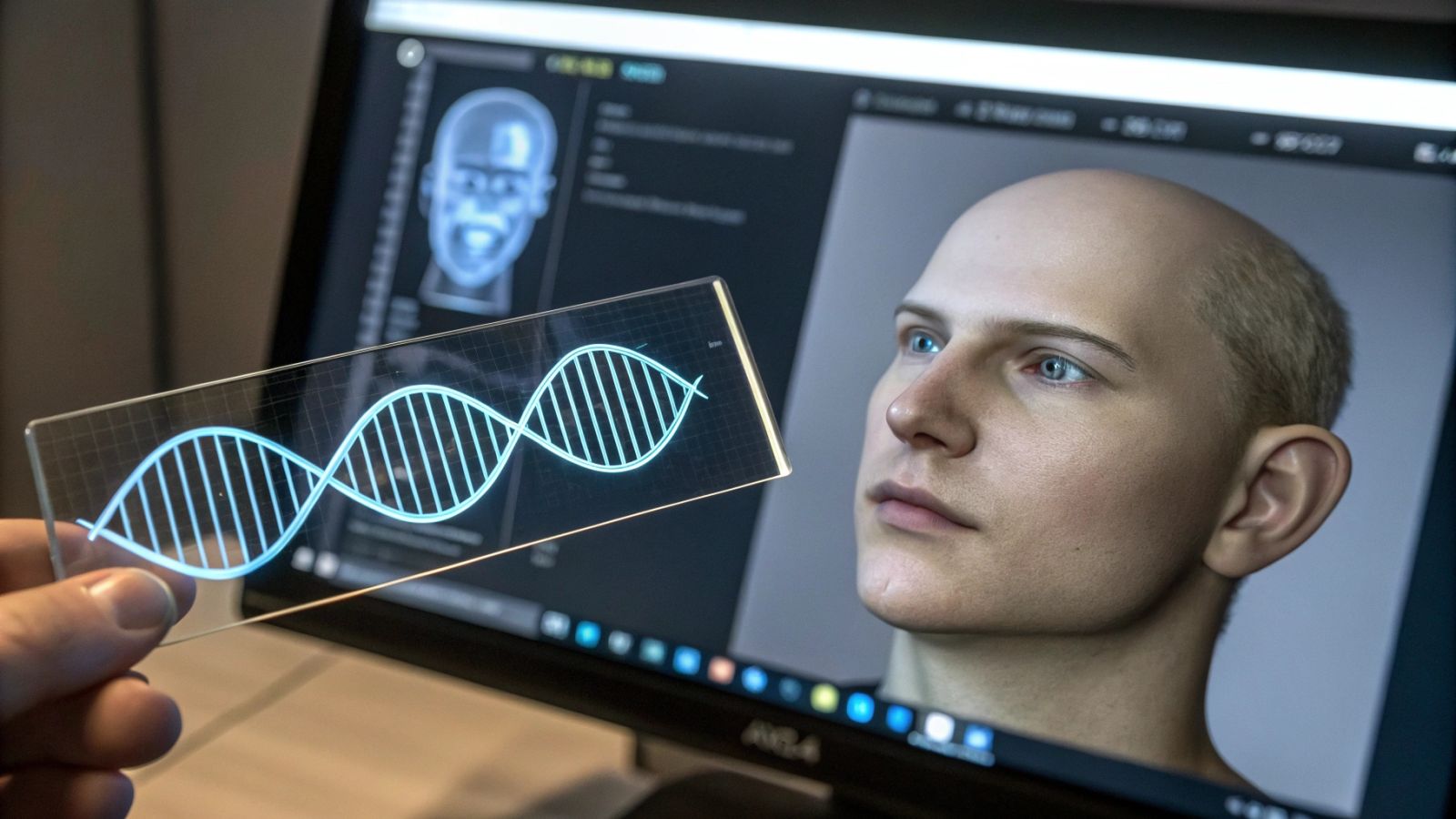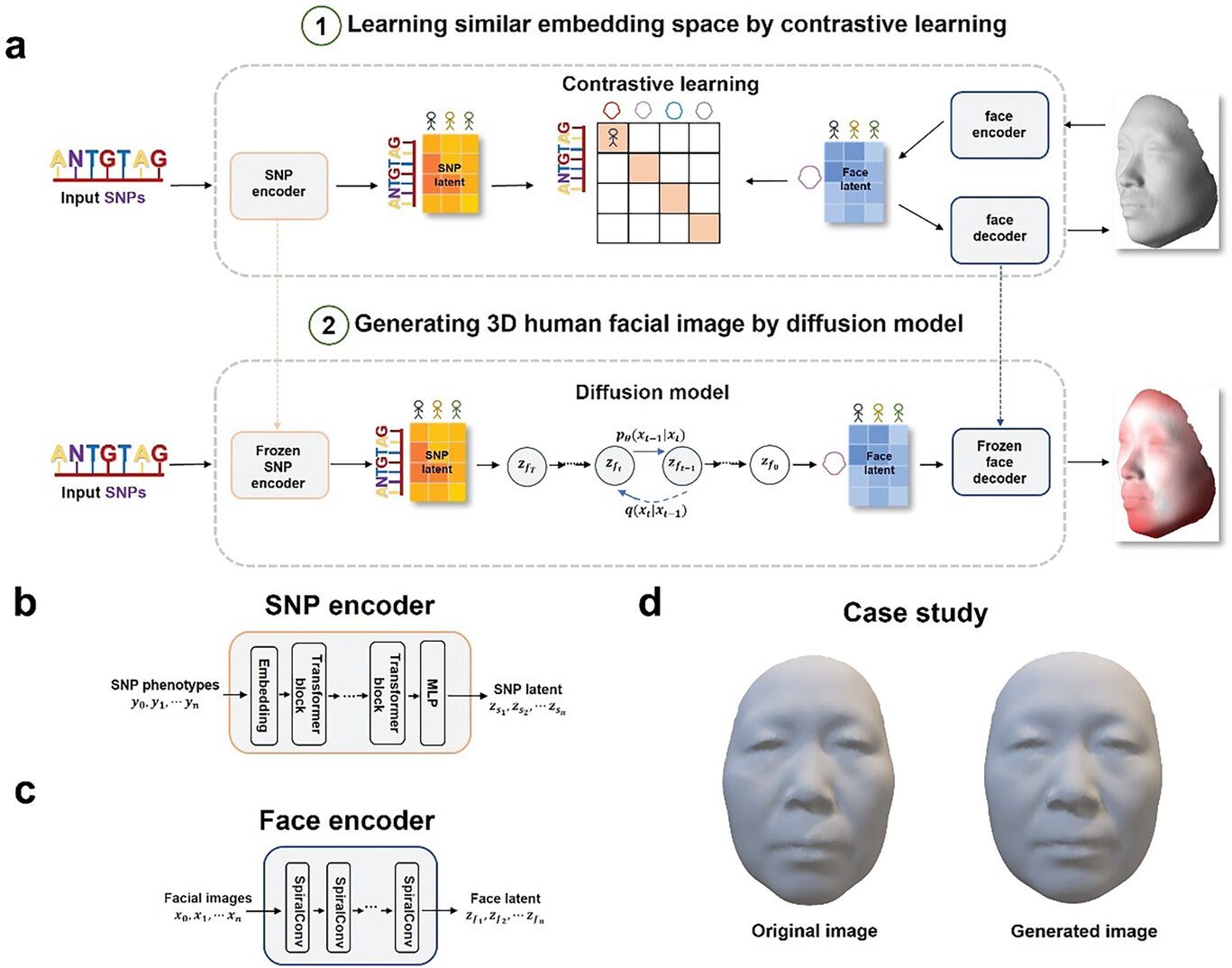This Chinese AI reconstructs your face by analyzing your DNA 🧬
Published by Cédric,
Article author: Cédric DEPOND
Source: Advanced Science
Other Languages: FR, DE, ES, PT
Article author: Cédric DEPOND
Source: Advanced Science
Other Languages: FR, DE, ES, PT
Follow us on Google News (click on ☆)

This breakthrough, named Difface, relies on a detailed analysis of genetic variations linked to facial morphology. While its potential applications in medicine and forensics are promising, they also raise major ethical concerns.
How DNA shapes our faces
Genes influence facial structure, from cheekbones to nose shape. Genetic markers, such as single nucleotide polymorphisms (SNPs), play a key role in these characteristics. Difface combines this data with a 3D model using a contrastive learning method.
The AI was trained on nearly 10,000 Chinese volunteers, combining genetic sequencing and high-resolution facial scans. The results show high reconstruction accuracy: on average, the reconstruction error was just 3.5 mm (0.14 inches). Adding information like age or gender further improves the quality of the models.
Certain features, such as nose shape, remain discernible even with incomplete genetic data. However, below 70% of the analyzed SNPs, the generated faces naturally lose specificity.

a) Diagram of Difface's operation on a set of N SNP-face pairs. The encoders learn a shared space by maximizing the similarity of correct pairs and reducing that of incorrect pairs.
b) Architecture of the SNP encoder.
c) Architecture of the face encoder.
d) Case study comparing original and generated images.
A tool with controversial implications
In forensics, Difface could help identify suspects from DNA left at a crime scene. In tests, participants had to compare the reconstructed face against a sample of five human faces: they successfully identified the correct one in 75% of cases. But this accuracy decreases with a larger pool of possibilities.
The use of this technology raises privacy concerns. Anonymized genetic data could be re-identified through facial translation, opening the door to abuse. Current legislation is not equipped to handle these challenges, particularly in countries like China or the United States.
On the other hand, in medicine, for example, Difface could help diagnose congenital syndromes or predict aging. However, its effectiveness remains limited to populations genetically similar to those used for its training.